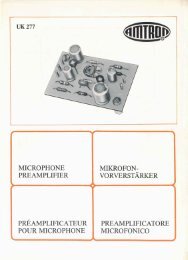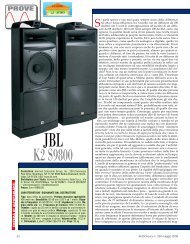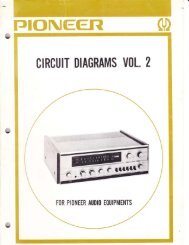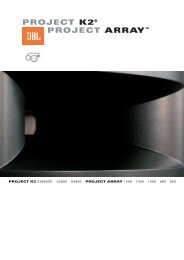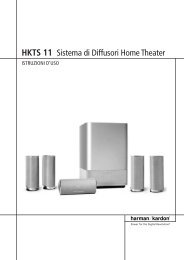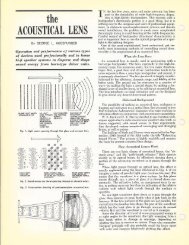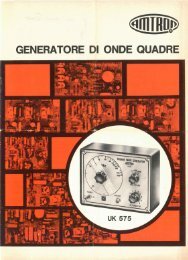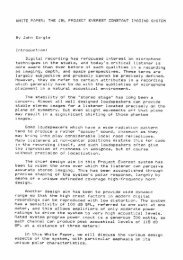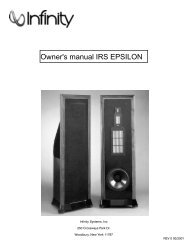JBL - K2 S9800 - White Paper (english) (2001).
JBL - K2 S9800 - White Paper (english) (2001).
JBL - K2 S9800 - White Paper (english) (2001).
Create successful ePaper yourself
Turn your PDF publications into a flip-book with our unique Google optimized e-Paper software.
FIFTH DRAFT (15 May <strong>2001</strong>)<br />
<strong>JBL</strong> <strong>White</strong> <strong>Paper</strong>: The New <strong>K2</strong>.<strong>S9800</strong> Loudspeaker System<br />
A. Introduction The Design Brief:<br />
By <strong>JBL</strong> Technical Staff<br />
The advent of high-density recorded media for the consumer has challenged manufacturers of<br />
loudspeakers and microphones to push the frequency response envelope of transducers and<br />
systems up to 50 kHz in order take advantage of the program signals that can now be recorded in<br />
the DVD-Audio and Sony-Philips SACD software formats. The issue is not so much whether<br />
listeners can hear this uppermost octave as such, but rather that the bandwidth extension ensures<br />
smoother and less aberrated frequency response in the upper portion of the normal audio<br />
bandwidth than we have known before.<br />
Another major consideration is uniformity of acoustical power radiation from the loudspeaker<br />
into the listening space. There are two aspects here: smooth on-axis response and controlled<br />
vertical and lateral radiation angles. Studies carried out by various technical groups within the<br />
Harman organization have shown a universal preference on the part of professionals and critical<br />
consumers for loudspeakers that exhibit such response uniformity.<br />
At the same time, there is an ever stronger demand from critical listeners for lower distortion in<br />
loudspeaker systems, effectively matching the low distortion normally found in the best<br />
microphones, recording systems and playback electronics.<br />
In addition to the foregoing requirements, critical listeners demand realistic playback levels with<br />
minimal compression of dynamics. While there may be several approaches to achieving<br />
bandwidth extension and uniform power response, there remains only one way to ensure high<br />
playback levels with high dynamic linearity — and that is through the use of over-designed<br />
transducers that are capable of output levels many times greater than will normally be required of<br />
them.<br />
In critical loudspeaker auditioning sessions, listeners become very aware of subtle timbral<br />
aspects which are often difficult to measure. Such matters as cone materials, high frequency<br />
diaphragm materials and dividing network component integrity become important design<br />
considerations in defining a modern state of the art loudspeaker system.<br />
Finally, the appearance and shape of a fine loudspeaker system must reflect natural and pleasing<br />
proportions, show use of the finest materials, and be acoustically correct insofar as physical<br />
boundary conditions for transducer performance is concerned.<br />
In this <strong>White</strong> <strong>Paper</strong> we will examine transducer, horn and system designs in detail, discussing all<br />
aspects of their engineering and development. We will then move on to the evolution of the<br />
1



